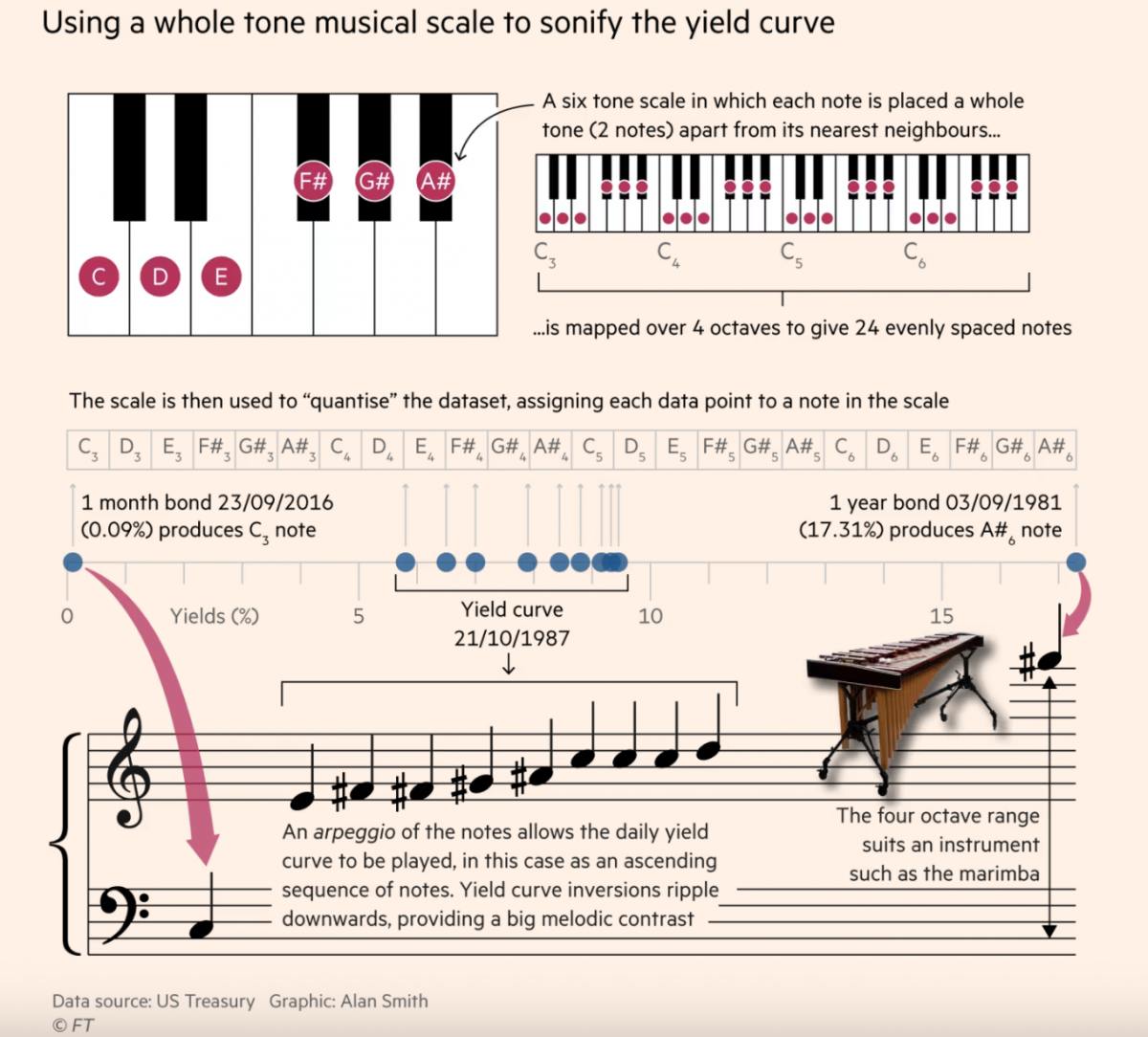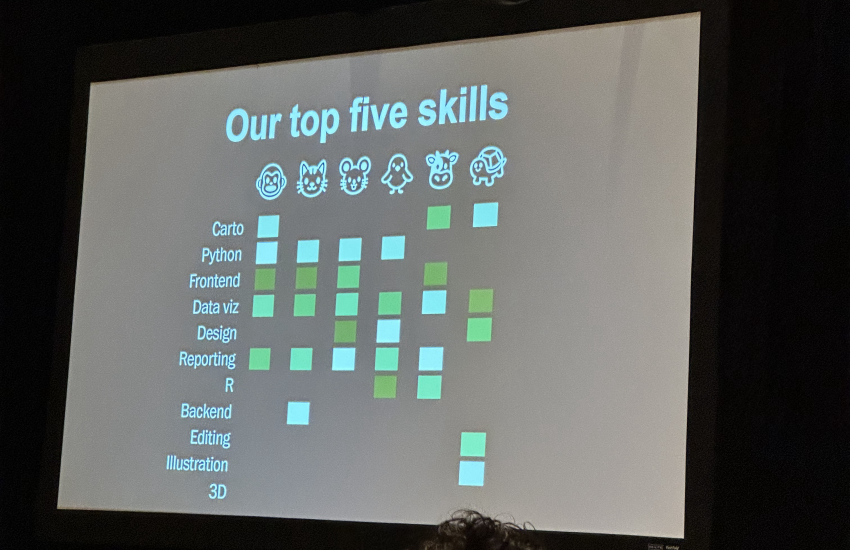These tools will take your data to a new level — or decibel
As data visualizations become more prevalent in news coverage, more and more people are looking to data sonification as a new frontier. Sonification is a process that translates data, such as numbers on a chart, into musical notes and sound.
Organizations like the Financial Times, BBC, The New York Times and the Tactical Technology Collective have used data sonification to explore a range of topics, from Egyptian building collapses to the value of the British pound.
Data sonification can help make data easier to interpret for visually impaired readers who may not be able to see a data visualization, said Andrew Heiskell Braille and Chancey Fleet — Talking Book Library’s assistive technology coordinator — in a Financial Times article.
It might also help readers feel something from the data you’re presenting, as data can come alive off the screen when listened to. In an article for Wired, Dartmouth Digital Humanities and Social Engagement Chair Jacqueline D. Wernimont argues that people may need more tactile experiences with data to process it, especially when faced with overwhelming amounts of it, like during the COVID-19 pandemic. She suggests that data sonification might be a good way to get people more engaged.
If you want to try creating your first data sonification project, here are three free tools to get you started.
TwoTone.io: The user-friendly option
TwoTone is a free open-source web app that allows users to easily sonify data. You can input up to 2,000 rows of data in Microsoft Excel, CSV or OpenDocument spreadsheet formats to TwoTone, and it will automatically generate an audio track. TwoTone then allows you to create additional audio tracks and change the track’s instrument to the piano, double bass, guitar, violin or trumpet or to something less common like church organ, mandolin, marimba, harp, glockenspiel or synthesizer. You can then change the track’s BPM and/or duration and export your track as either an MP3 or Waveform file.
One example of data sonification using TwoTone is Datavized’s Basque Country EUSTAT “Song of the Day” sonification. Datavized, an immersive media studio in New York City, collaborated with the Basque Statistics Office to sonify 2013 survey data on how residents used their time.

Data Mapper and GarageBand: The slightly advanced option for those who can read music
Information designer Duncan Geere and data journalist Miriam Quick, who host the Data sonification podcast “Loud Numbers” and run the Decibels discord server for sonification enthusiasts, created the tool Data Mapper. Data Mapper allows you to input a CSV file and maps a column from your data file to musical notes. You can then add those notes to an instrumental score in GarageBand. Geere and Quick consider this tool to be especially useful for punk sonification, the concept of making data sonifications with a punk ethos and as little coding as possible.
Loud Numbers’ VCV Rack Plugin: The best option for people who need more sound control
The Loud Numbers team also created a VCV Rack Plugin that allows you to use CSV data to control the VCV Rack virtual modular synthesizer, which is available to download for free online. This is another good method for punk sonifications if you want to use a synthesizer and have a higher level of control over the exact notes and sound.
If you’re looking for something more serious beyond these free tools, I suggest you look into Ableton and Monome Norns. As an additional resource, here is also perhaps the world’s biggest Data Sonification Archive, run by Paolo Ciuccarelli, director of Northeastern University’s Center for Design. Have fun sonifying!
- These tools will take your data to a new level — or decibel - January 4, 2024
- How to analyze the screen times of presidential candidates - October 31, 2023





